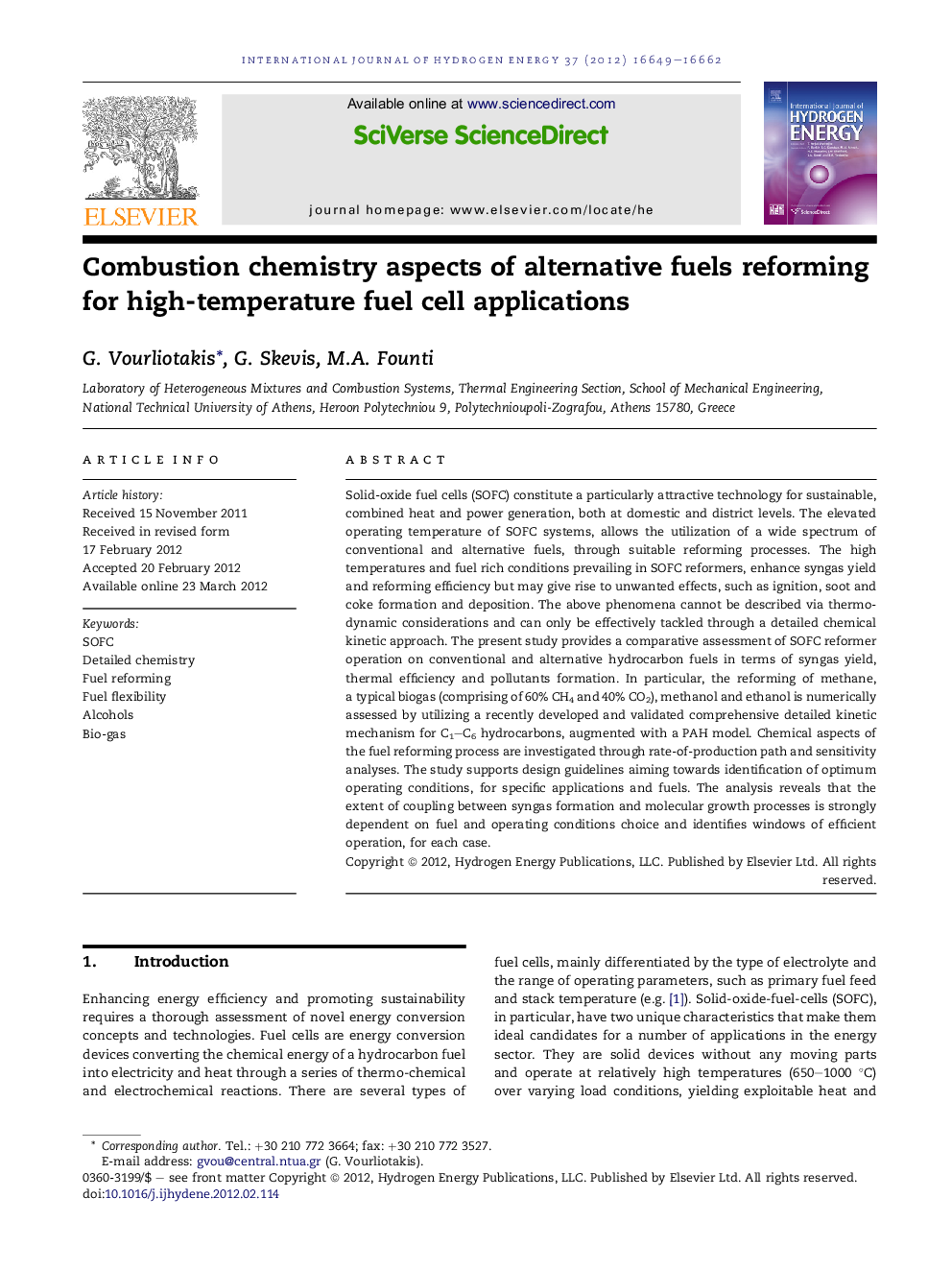| Article ID | Journal | Published Year | Pages | File Type |
|---|---|---|---|---|
| 1282198 | International Journal of Hydrogen Energy | 2012 | 14 Pages |
Solid-oxide fuel cells (SOFC) constitute a particularly attractive technology for sustainable, combined heat and power generation, both at domestic and district levels. The elevated operating temperature of SOFC systems, allows the utilization of a wide spectrum of conventional and alternative fuels, through suitable reforming processes. The high temperatures and fuel rich conditions prevailing in SOFC reformers, enhance syngas yield and reforming efficiency but may give rise to unwanted effects, such as ignition, soot and coke formation and deposition. The above phenomena cannot be described via thermodynamic considerations and can only be effectively tackled through a detailed chemical kinetic approach. The present study provides a comparative assessment of SOFC reformer operation on conventional and alternative hydrocarbon fuels in terms of syngas yield, thermal efficiency and pollutants formation. In particular, the reforming of methane, a typical biogas (comprising of 60% CH4 and 40% CO2), methanol and ethanol is numerically assessed by utilizing a recently developed and validated comprehensive detailed kinetic mechanism for C1–C6 hydrocarbons, augmented with a PAH model. Chemical aspects of the fuel reforming process are investigated through rate-of-production path and sensitivity analyses. The study supports design guidelines aiming towards identification of optimum operating conditions, for specific applications and fuels. The analysis reveals that the extent of coupling between syngas formation and molecular growth processes is strongly dependent on fuel and operating conditions choice and identifies windows of efficient operation, for each case.
